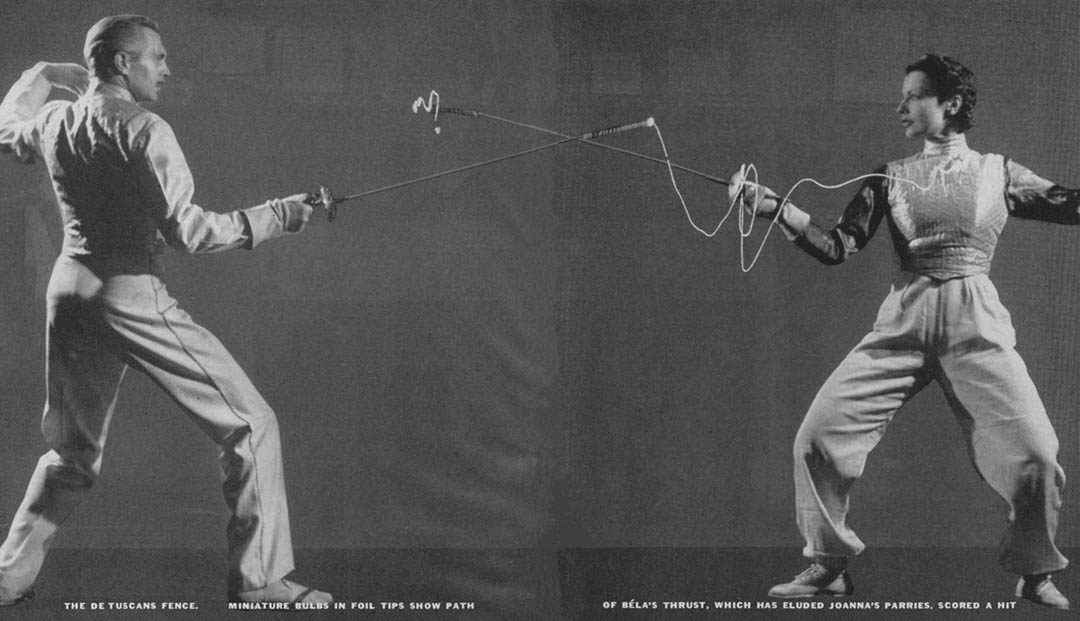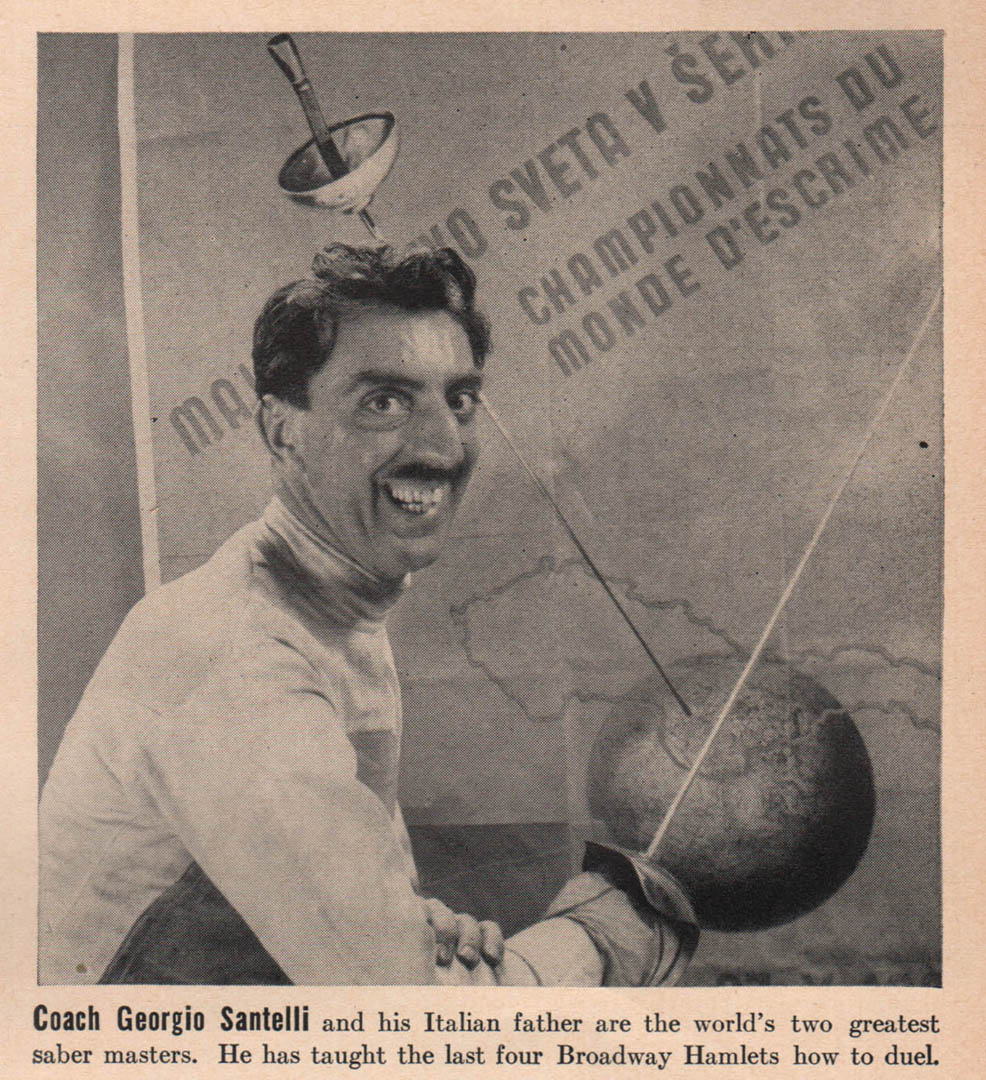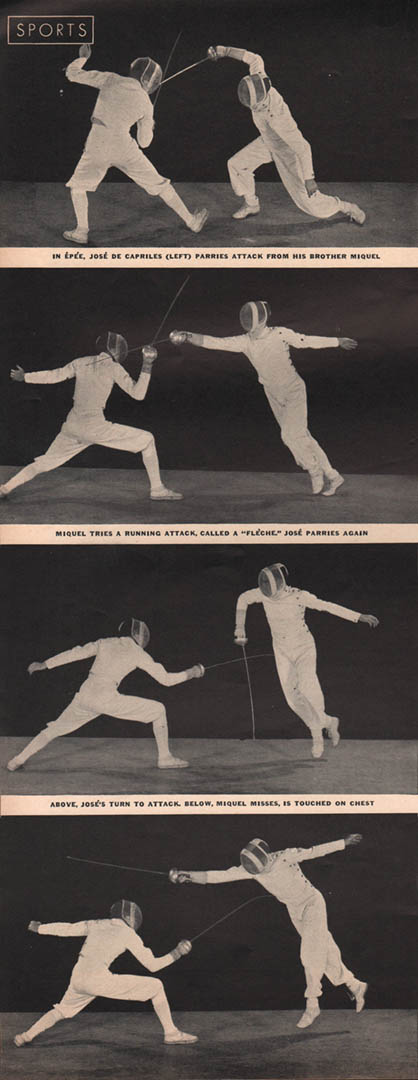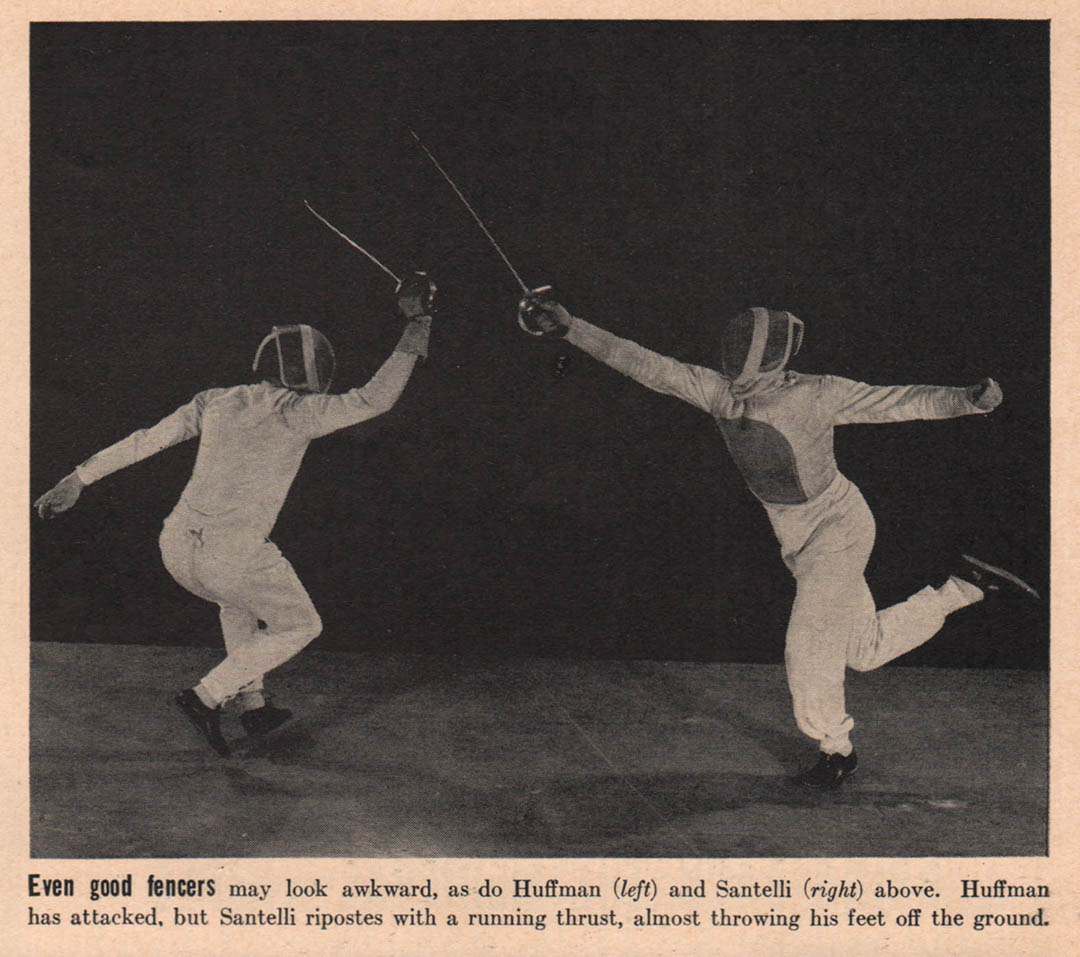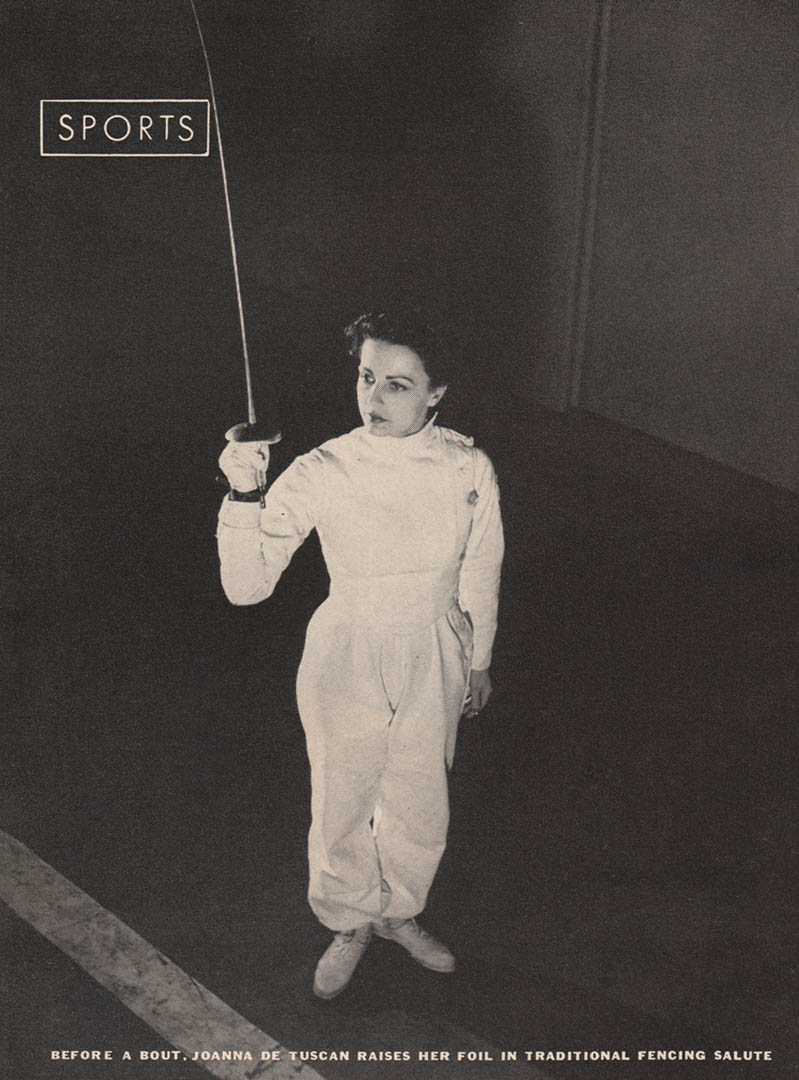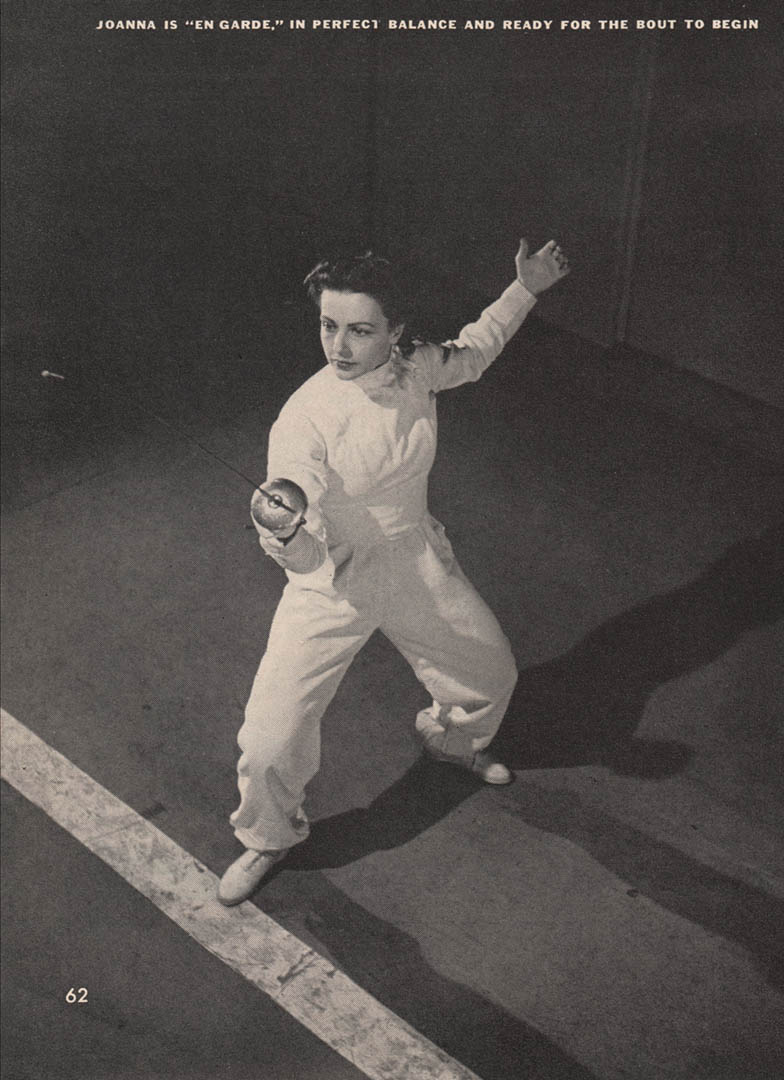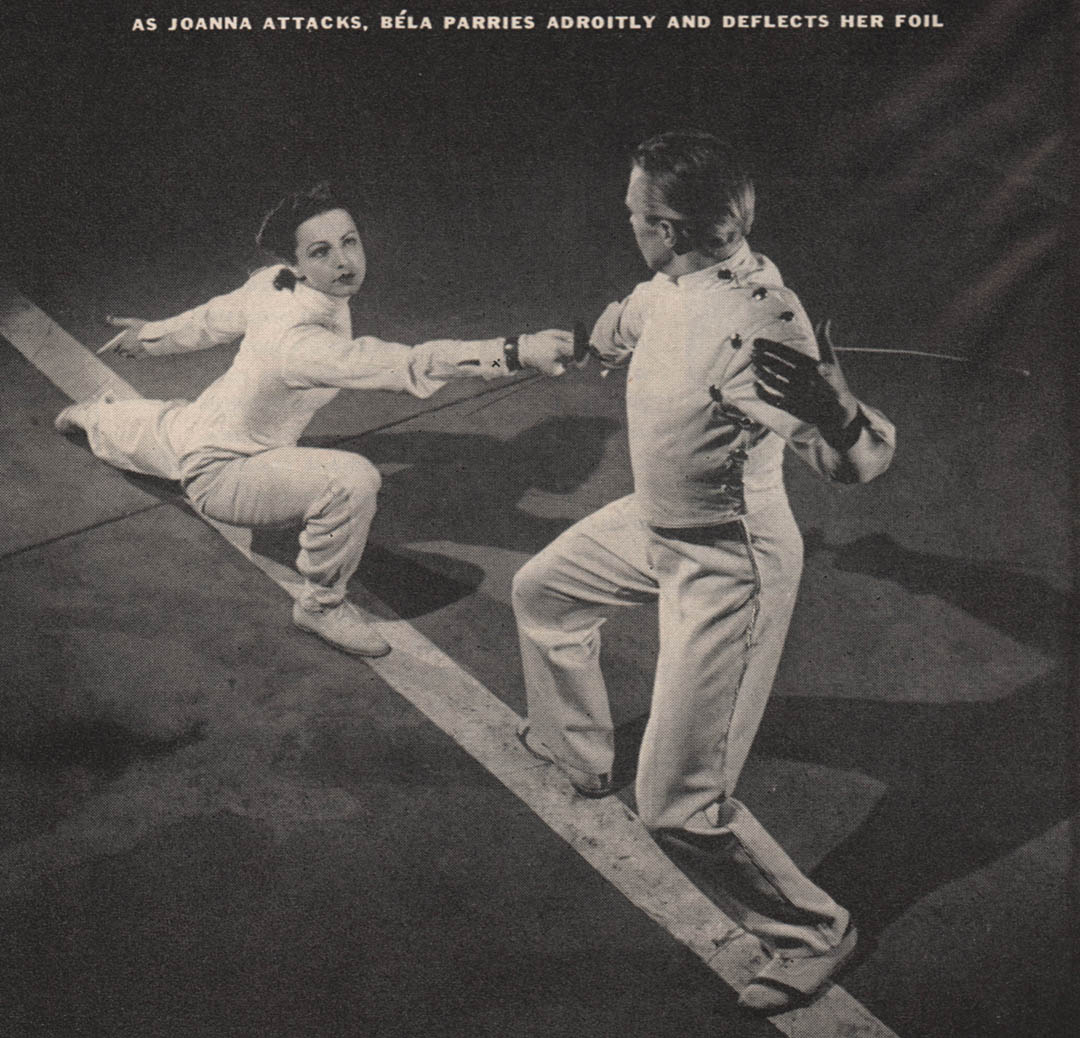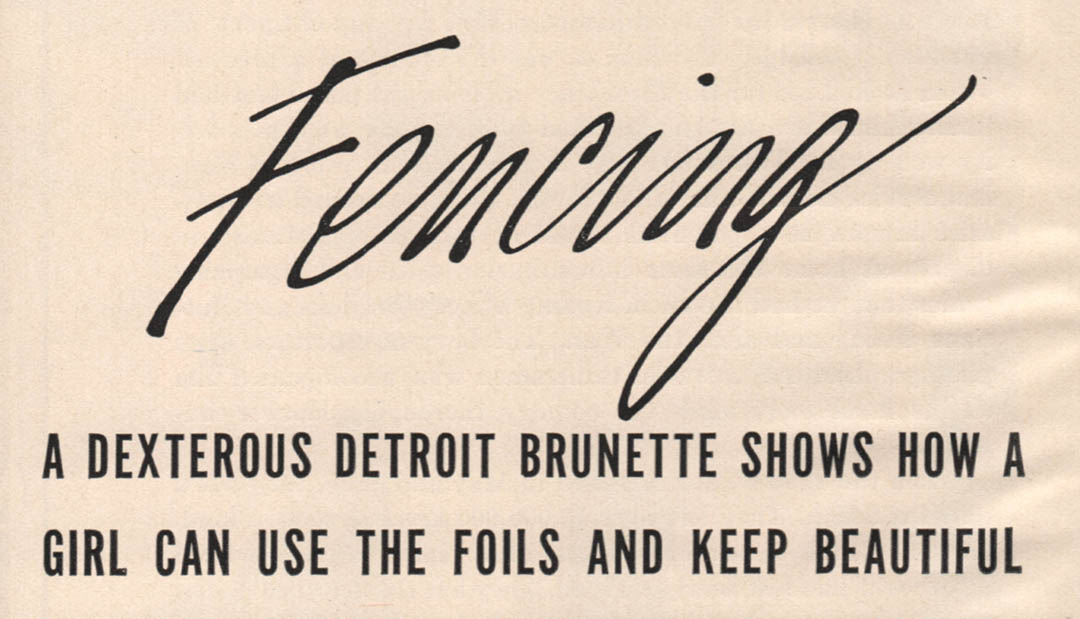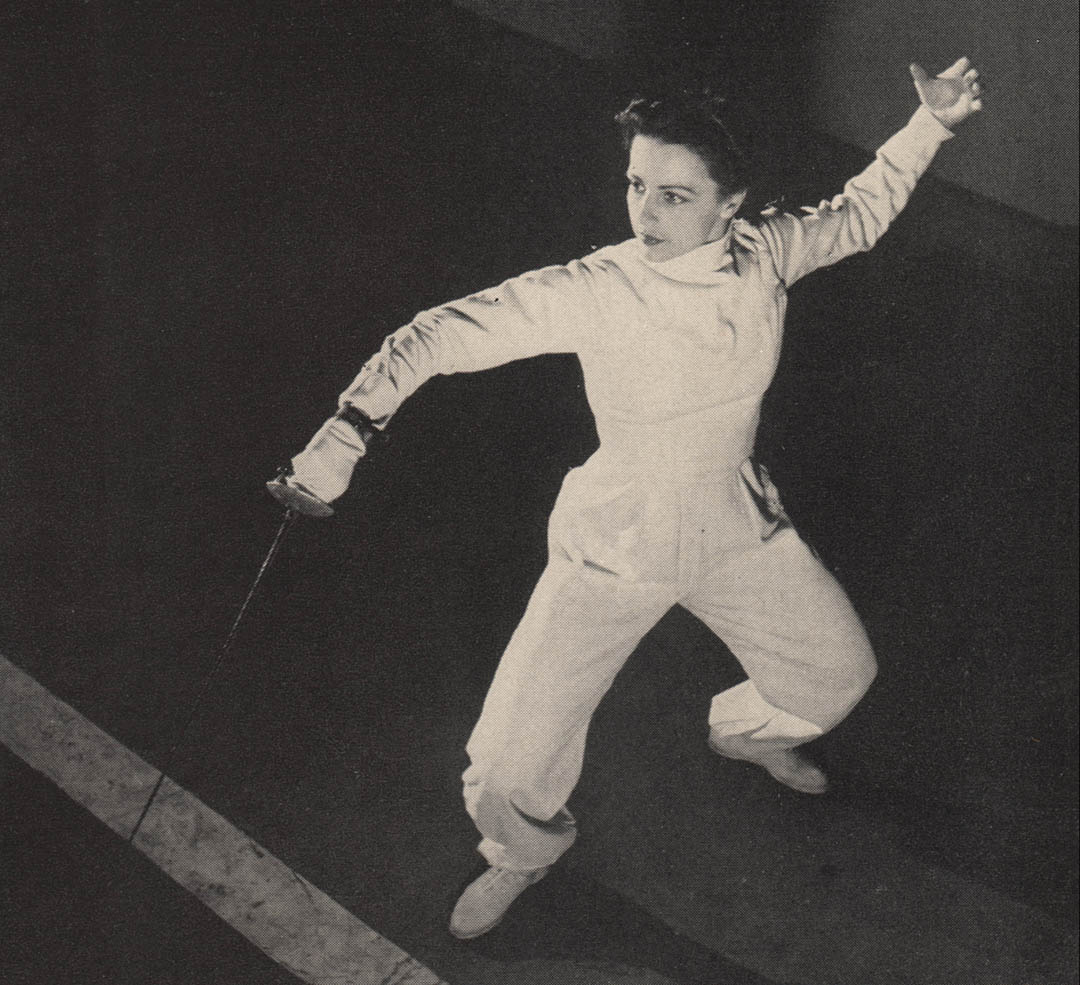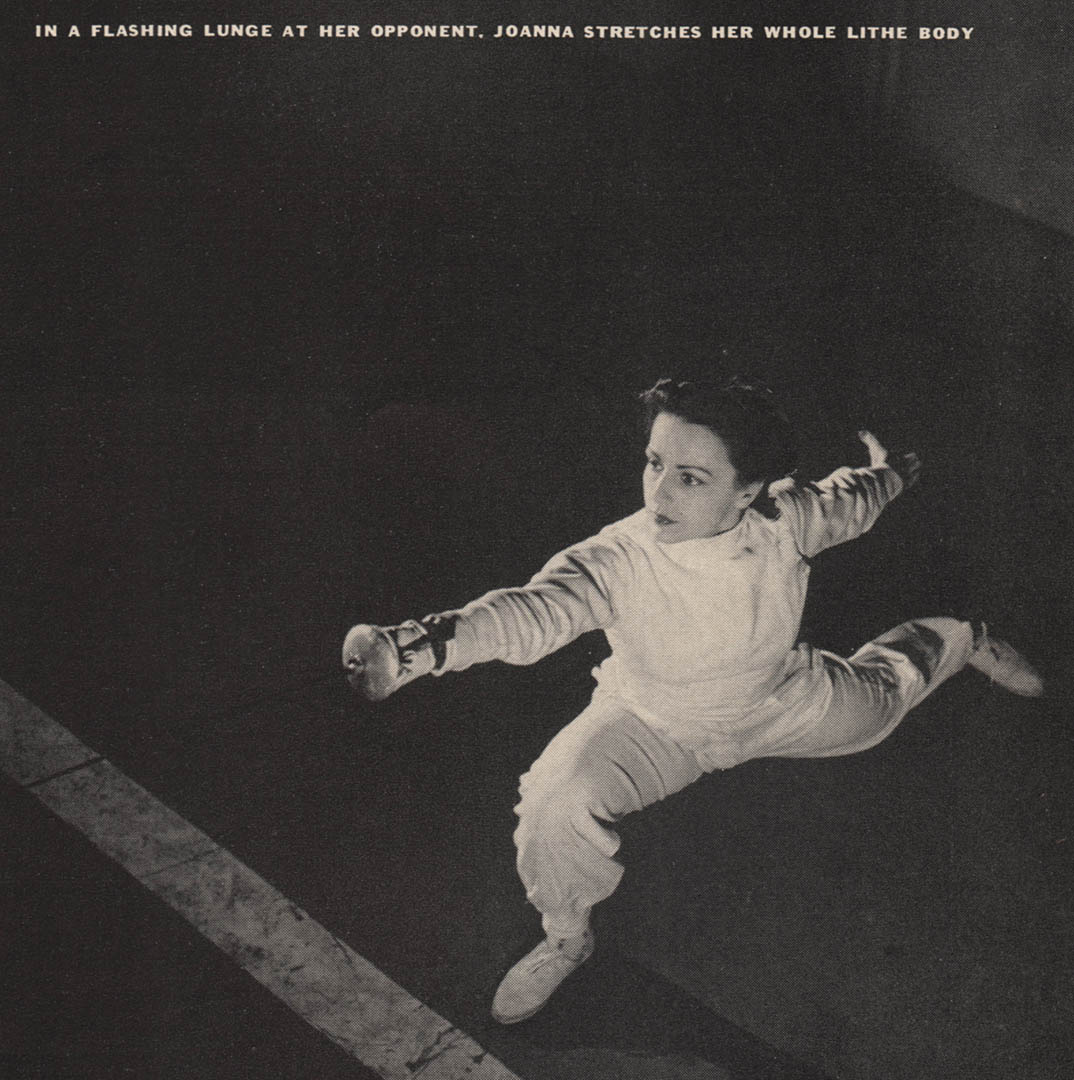One of the great features of all the scrapbooks created by Hans Halberstadt is the inclusion of ephemeral media. Hans would post cartoons, news clippings and magazine articles, interspersed with snapshots and portrait photography. That’s not including tournament programs, of which there are many, and they are often filled in with names and places. Hans kept track of things like that.
It’s the magazine articles I’m focusing on this time around. Much to my benefit, Hans would often go out of his way to include the date and magazine name in his clippings. He would cut out odd shapes to make sure he included that sort of information. Not always, of course, but often. I’ve used that information to track down an old copy of more than one long out of print magazine. Blessings upon your head, Ebay. One of the tricky ones to track down, surprisingly, is Life Magazine. Life, in the incarnation I remember, ran from 1936 to 1972. It was a ‘general interest’ weekly and, looking at it as a whole, documents the lifestyle changes of several generations of Americans. If I may lodge a small complaint, they did not, as most magazines do, tuck the name “Life” into a corner of facing pages. For all that Hans would include large clippings, if they came from Life Magazine, there wouldn’t be a way to know that from looking at the pages in the scrapbook.
Fortunately, Life had a certain look. (No disparity intended toward the main competitor in their market, Look Magazine.) However, making the assumption that an article may be from Life Magazine doesn’t help much in searching for one or two pages from a magazine that published weekly for 36 years. That’s more than 1,800 issues to go through and I don’t know how many pages. They do have a nice, searchable archive, but it’s touchy. You need to get a name exactly right and give it a small range of years or, for best results, a specific year. Between one thing and another, I was able to track down original copies of two issues, printed a year apart, that had some nice fencing-interest pages.
Giorgio Santelli, circa 1939. The spelling above, “Georgio”, is interesting. I wonder if that was in any way a common spelling for his name. I’ve always heard it pronounced with the Italian pronunciation in mind. Phonetically, it would be something like “Jee-yore-jee-oh” as opposed to the above spelling, which would seem to be “George-ee-oh”. Any old Santelli students out there with an offering? However you say it, how about that look on his face? That’s one crazy smile.
The first article’s publication date actual pre-dates the arrival of Hans to the US. It’s from the January 2nd issue from 1939 and features a handful of Santelli students prepping for an event that’s happening – apparently – in Cuba. The article is heavy on photographs and light on information.
They say a picture is worth a thousand words, but a little more information about what event the fencers are training for might have been nice for posterity. The fencers featured in the photos are Santelli, John Huffman and the de Capriles brothers, Jose and Miguel.
Interestingly, the brief written article accompanying the images here tries to explain away the poor posture of the fencers as ‘curious and acrobatic stunts’, and that the average American might find that ‘fencers look faintly ridiculous.’ Rather, I think they had a lousy photographer and didn’t really do a good job of planning what the images ought to look like. Or, there is a roll of film locked in a vault somewhere with the rest of photos that were taken that day and they selected for publication some of the more awkward ones from the roll.
“Even good fencers may look awkward…” Well, good photographers can take poorly timed photographs, too. Sheesh. You’d think they could have shot a couple more rolls of film to try to get it right. Maybe sport photography hadn’t really taken off yet. Certainly when I think about the types of photos used for things like baseball cards from this era, there wasn’t the sort of in-action shot you see today. Posed ballplayers ‘taking a swing’ or un-helmeted quarterbacks ‘throwing a pass’ were the order of the day. Maybe camera shutters and response time for film hadn’t yet achieved the proper level for stopping a fast-moving athlete in action. Or they had a lousy photographer and/or art director. Form your own opinion.
By contrast, the second article from Life that Hans Halberstadt glued into his scrapbook has an entirely different approach to the photos, and I think I know why. The photo at the top of the article today shows Bela and Joanna de Tuscan using the electrical system Bela de Tuscan developed for foil. It’s not clear that the version they’re using was for competition or for theatrical use. I’m guessing the latter. However, from a purely aesthetic point of view, the photos in this article are much more thought out and have clearly been posed for clarity.
The de Tuscans were theatrically minded. The lighted ends of foil tips was used by them for stage shows that they put on. Joanna would dress in colorful fencing garb and Bela would put her through a lesson, of sorts, with theatrical flourishes and lots of exciting back and forth. In 1939, they did a 10 month stint at the London Palladium, and played the Riviera, where they ‘entranced… audiences with a fencing “love waltz”‘. What that looked like or how long each performance lasted, I have no idea. Now there’s a search mission for someone. Where’s the film reel showing that? Surely it had to have been filmed at some point. They were even featured in a Jimmy Durante-headlined Broadway production, “Keep Off The Grass” in May and June of 1940. Fourty four performances. I’ll have to do some digging on reviews of the show.
This photo spread is from Life’s May 6, 1940 issue, so they were likely in New York rehearsing for the Broadway production when these photos were taken. For all I know, they may have been taken on the rehearsal stage. They’re certainly well lit and some of the camera angles were shot on booms or ladders to get than down-angle look.
A vastly different look than the casual approach to the photos in the Santelli article. I think the de Tuscans must have had an influence over what was shot and how it was staged. At this point in time, they would have been the experts in what worked and what they liked.
If there’s one thing that stands out in the article, apart from the seriousness of both Bela and Joanna as they display their skill and artfulness, is the sexist tone the magazine takes whenever they get a chance. It’s as if Joanna is more concerned with using the foil to keep beautiful than how best to put a point on target. She was an Olympian in 1936 and, true or not, claimed the World Women’s Professional title. She could fence, compete and win. Here’s the quote from the accompanying text:
Fencers admire Joanna because she captained U.S. women fencers in 1936 Olympic games and last year won the world’s professional championship. Males admire Joanna for simpler reasons.
See what they did there? So casually degrading. So socially acceptable. So freaking insulting. What excuse does a writer have for taking such liberties with their subject? Clearly, they had never been pitted against an intense female fencing adversary who is looking to both skewer you and take your lunch money. Oh, you know who you are out there.
Joanna demonstrates the Seconde parry. In the upcoming documentary feature currently in post-production that’s been in work by the same team that brought you The Last Captain (now available for free viewing on YouTube), that is to say, me & filmmaking partner Greg Lynch Jr., there’s a story about how my coach, Michael D’Asaro Sr., described the seconde parry in very primal terms. I don’t want to give it away, so you’ll just have to be on the lookout for our second documentary feature, “Stro”. Coming soon!
I have one other, later, Life magazine article featuring fencing, although I suspect there are still more. It also features Bela de Tuscan, but by 1950, the date of that later publication, he and Joanna had divorced. And with that, I once again thank Hans Halberstadt’s foresight in leaving just enough clues in his scrapbooks for me to come along all these years later and find the trail of breadcrumbs that take me down the path of identifying source material to include in my Archive. So thanks, Hans! You too, Ebay!
The recent requirements of working-from-home, schooling-from-home and sheltering-in-place (I live in California) has brought about a wide array of lifestyle changes and in-home project lists that are at least causing me to get some things done that haven’t recently been the focus of my attention. In other words, I cleaned my office. It revealed several layers of Ebay purchases and other longer-held items that needed to be filed, labeled, bagged, whatever. My options for future stories has been broadened by coming across things I’d long ago thought might make interesting inclusions for stories here on the website. Now that they’ve re-surfaced, I’ll have to dive in and make a list of what to tackle first. In such times, it’s good to have plenty to do.
Stay safe out there, people.

